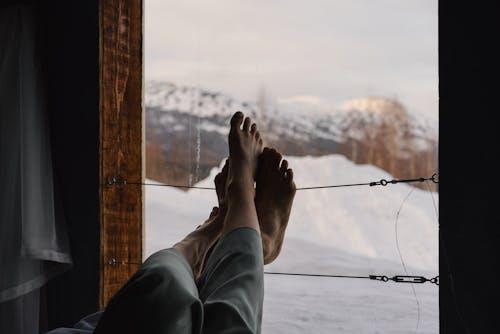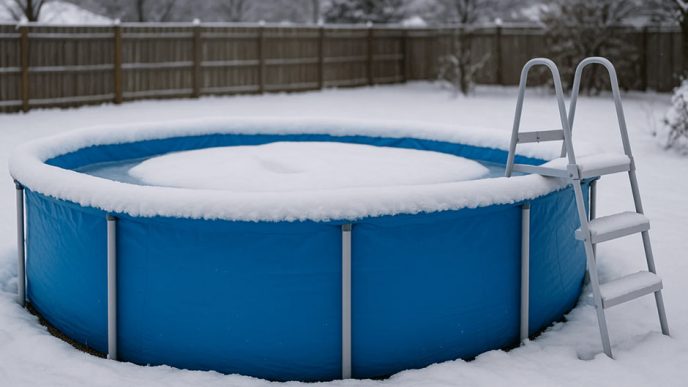Have you ever felt stressed when the weather changes fast in your area? Living in places like Cuyahoga Falls, OH, or anywhere else with cold winters, can make you think about how ready your home is for harsh weather and sudden drops in temperature. Cold seasons bring challenges that affect comfort, safety, and energy bills. Many people wait until the last minute, but early preparation makes a big difference.
A little planning helps you stay warm, avoid expensive problems, and feel more in control as winter approaches. This blog will share helpful steps that protect your home during rough weather.
Check and Strengthen Your Home’s Insulation
Your home stays warmer and more comfortable when insulation works well. Good insulation stops warm air from leaving your house and stops cold air from getting inside. Many homeowners forget to check their insulation until problems start. You can look at areas like the attic, basement, walls, and crawl spaces to see if insulation looks thin, damaged, or old. When insulation wears out, it causes heating systems to work harder, which leads to higher bills and uneven temperatures in the home.
You can walk through your home and look for signs that insulation needs help. Cold spots, drafty rooms, or sudden temperature changes show you that insulation may be weak. You can add new insulation or replace older materials to fix the problem. Small gaps around doors and windows also create heat loss. You can seal these areas with weatherstripping or caulk to improve warmth.
Inspect and Maintain Your Heating System
Your heating system works harder when temperatures drop, so it needs proper attention before winter arrives. A yearly checkup helps you catch small issues early and prevents serious breakdowns. Many homeowners in the area reach out for furnace repair in Cuyahoga Falls, OH when they notice unusual sounds, weak airflow, or rising energy bills. Regular maintenance keeps the system running well and helps your home stay warm during harsh conditions. The goal is to keep the system strong before cold weather hits.
You can look at your heating system and listen for changes in how it runs. A clean filter helps your furnace move warm air through your home without strain. You can replace filters every few months during the winter season. Checking vents and keeping them open creates steady airflow. If you smell unusual odors or notice the furnace cycling too often, it is time for a professional inspection. Paying attention to early signs helps you stay warm and avoids emergency repairs during the coldest days of the year.
Protect Your Pipes from Freezing
Pipes freeze fast when temperatures fall, which causes major damage inside the home. Water expands when it freezes, which can lead to burst pipes and expensive repairs. You can protect your plumbing system by adding foam sleeves to exposed pipes in places like the basement, garage, or crawl spaces. These small steps give pipes the warmth they need during winter. Keeping cabinet doors open under sinks helps warm air reach pipes on very cold nights.
You can also let a small trickle of water run from your faucets when temperatures get dangerously low. Moving water does not freeze as quickly as still water. If your home has outdoor faucets, you can drain and disconnect hoses before the cold months arrive. This helps prevent damage to the faucet and the pipe inside the wall. Taking time to protect your pipes gives you peace during harsh weather and helps you avoid repair bills when temperatures drop fast.
Seal Gaps Around Doors and Windows
Cold air enters the home through tiny gaps around doors and windows. These small openings seem minor, but they create uncomfortable drafts during winter. You can walk around your home on a windy day and put your hand near the edges of windows and doors to feel for hidden leaks. Weatherstripping and caulking are simple fixes that block cold air and keep warm air inside the home. These steps create a more stable indoor temperature when harsh weather arrives.
You can also look at older windows to see if they need extra help. Adding plastic film or heavy curtains gives you an extra layer of protection. Storm doors and storm windows offer even more insulation when used correctly. When you take time to seal these areas, your heating system does not work as hard, which helps lower energy costs. A small investment in sealing materials saves you money and keeps your home more comfortable all season.
Prepare Your Roof and Gutters
Your roof protects your home from snow, ice, and strong winds, so it needs attention before winter arrives. You can look for loose shingles, damaged flashing, or worn areas that may lead to leaks during storms. A simple roof check helps you find problems early. You can also check your attic for signs of moisture, weak spots, or daylight that shines through the roof. These issues become worse during harsh weather, so early repairs offer strong protection.
Gutters also play an important role during winter. Leaves and debris clog gutters and cause water to overflow or freeze. When ice builds up, it creates pressure that damages both the gutter and the roof. Cleaning gutters before temperatures drop helps water move away from the home during cold weather. You can also add gutter guards if you live in an area with heavy snowfall. Keeping your roof and gutters in good shape protects your home from leaks and other winter damage.
In conclusion, harsh weather arrives every year, but your home does not need to struggle when temperatures drop. As you move through each season, you can think about the changes you make and how they help your home stay strong. Thoughtful planning today creates long-term comfort and peace as cold weather returns each year.














